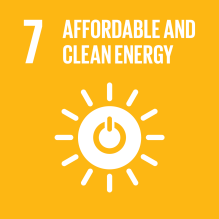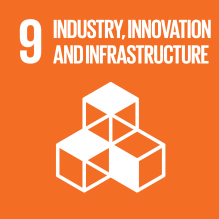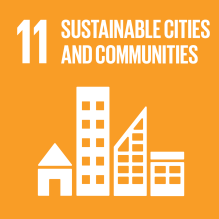
Keep It Cozy and Green
Achieving year-round comfort requires energy and investment. However, conventional heating and cooling systems are inefficient and contribute to environmental degradation. To reduce our carbon footprint and promote sustainable energy use, we must switch to zero-carbon options like energy-efficient heat pumps that run on clean energy to regulate indoor temperature.
On this Page
Sub-strategies
- Phase I (2021)
- Establish decarbonization committee and conduct sector level set, engage in education and assess case studies and best practices across R1 public research universities
- Phase II (2022)
- Begin construction on UB’s first decarbonized building leveraging water-sourced heat pumps on UB’s South Campus (Crosby Hall) and begin design for replication in Foster
- Select vendor and begin to build UB’s South Campus Clean Energy Master Plan as a roadmap for scope 1 building decarbonization
- Phase III (2023)
- Finish construction of newly decarbonized Crosby Hall
- Begin construction of scope 1 decarbonization of Foster Hall
- Complete comprehensive South Campus Clean Energy Master Plan
- Phase IV (2024)
- Launch North Campus Clean Energy Master Plan Development
- Advance design work for phase I of South Campus Clean Energy Master Plan (Parker, Clark and Pharmacy)
- Seek key funding to advance implementation work
- Phase V (2025-26)
- Construct first geothermal wells and complete ground sourced heat pump work with Parker, Clark and Pharmacy building
- Complete North Campus Clean Energy Master Plan thus providing key guidance for all North Campus physical development
Policies
New York State's energy and carbon reduction goals and the SUNY Chancellor's initiatives fro deep carbon savings will assist in providing a framework to encourage further investment into clean energy central plant technologies. Partnering with NYSERDA and other funding agencies will assist in the development of specific campus policies.
Updates
Fall 2022 - Spring 2023
During the 2022-2023 school year, the university worked in partnership with Wendel Companies to establish a clean energy master plan for the university’s South Campus. This study represents a key step in transitioning away from natural gas and dramatically decreasing our scope 1 emissions. This initiative focused on four key goals for the South Campus:
· Provide a pathway to transition all building energy to zero carbon sources
· Create near term energy savings
· Provide a solution for electrification of heating systems
· Provide a 30% reduction in energy usage for the South Campus
The 1,500 page plan provides a detailed site assessment of current infrastructure, the challenges we face, key solutions, strategies, a detailed phased in plan, and a robust economic analysis. Work has already begun with heat pump technology being implemented in Crosby and Foster Halls—two marquee buildings on the South Campus.
In addition, the university also leveraged NSERDA’s FlexTech program for the fourth time to conduct a companion study on UB’s North Campus which will focus on 130 additional buildings and kick off in the Fall of 2023.
Fall 2020 - Spring 2021
The committee held meetings with the National Grid to assess UB’s energy needs on a macro level. They’re looking to the purchase of batteries from NAPA to offset the demand for high energy use. The committee’s also developing pilot projects to install heat pumps as an alternative to the current HVAC system to measure efficiency and GHG reductions. In the next year, they’re looking into scalability and comparing the advantages of a decentralized vs centralized energy system for the university.
Committee
- Captain: Tonga Pham, associate vice president for University Facilities
- Francine Battaglia, Chair, Mechanical and Aerospace Engineering
- Bruce Buerger, Assistant Director, Capital Planning
- Kimberly Navarroli, Director, Design and Construction
- Nicholas Rajkovich, Associate Professor, Architecture


